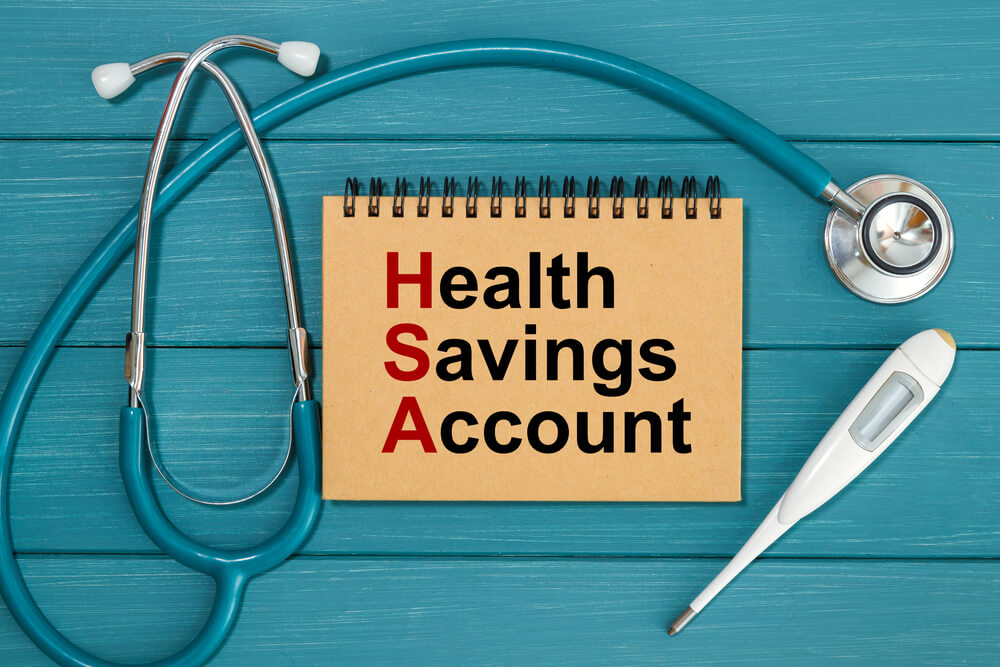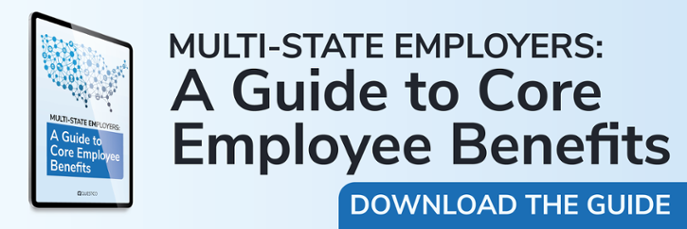Topic Employee Benefits,
How to Easily Offer HSAs to Employees

August 4, 2023 | By Questco Companies

The Internal Revenue Service (IRS) has announced increased Health Savings Accounts (HSAs) contribution limits for 2024. This change allows employees to save more money for their healthcare expenses in the coming year. The limit for single coverage is set to rise from $3,850 in 2023 to $4,150 in 2024. Similarly, for family coverage, the limit will jump from $7,750 to $8,300.
In addition to these changes, the minimum deductible amounts for high deductible health plans (HDHPs) - a prerequisite for HSA eligibility - are also set to rise. The minimum deductible for single plans will increase from $1,500 in 2023 to $1,600 in 2024. Family plans are set to rise to $3,200, up from $3,000. The maximum out-of-pocket limits will follow suit, with single plans rising to $8,050 and family plans reaching $16,100.
But how can employers offer these benefits to their employees?
There are generally two ways: employers can either apply themselves or partner with a professional employer organization (PEO). Both methods have their advantages and can be effective ways to provide employees with HSAs.
Always remember that offering HSAs to employees is not just about providing a benefit - it's about empowering them to manage their healthcare expenses more effectively.
What are Health Savings Accounts (HSAs)?
Health Savings Accounts, or HSAs, are tax-advantaged accounts designed to help individuals save for medical expenses. These accounts are coupled with high-deductible health plans (HDHPs), providing a way for employees to manage their healthcare costs.
HSAs offer a triple tax advantage that makes them a powerful tool for healthcare savings. Contributions made to an HSA are not subject to payroll or income taxes when deducted from employees' paychecks. The funds within the account can be invested and grow tax-free. No taxes are owed on withdrawn funds if they're used for qualified medical expenses.
Many employers don’t know that payroll-deferred HSA contributions are not subject to Social Security, Medicare (FICA), and federal unemployment (FUTA) taxes. This means that when employees contribute to their HSA through a payroll deduction, the money is excluded from federal income taxes and FICA/FUTA taxes. However, two states—California and New Jersey—tax HSA contributions at the state level.
HSAs are not just for current healthcare expenses. They can also serve as an investment vehicle for future medical costs. The funds in an HSA do not expire and can roll over from year to year, providing a long-term savings option. This is a key distinction from Flexible Spending Accounts (FSAs), which have annual "use it or lose it" restrictions on unspent funds.
Despite these benefits, many employees are still perplexed by HSAs. Approximately one in three adults enrolled in an HDHP haven't opened an HSA. Among those with an HSA, most had not contributed money into it in the past year. This suggests a need for more education and targeted interventions to enhance uptake of and contributions to health savings accounts.

What are High Deductible Health Plans (HDHPs)?
High Deductible Health Plans, or HDHPs, are a type of health insurance plan that, as the name suggests, come with a higher deductible than typical health insurance plans. The purpose of an HDHP is to provide coverage for significant, unexpected health costs, while keeping monthly premiums lower.
An HDHP is defined by its deductible, which is the amount you pay out of pocket for healthcare services before your insurance plan starts to pay. For the calendar year 2023, the minimum deductible for an individual HDHP is $1,500, and for a family HDHP, it's $3,000. However, it's important to note that HDHP deductibles can often be significantly higher than these minimums.
In addition to the deductible, HDHPs also have a limit on out-of-pocket costs. This is the maximum amount you'd have to pay in a year if you need more healthcare services. For 2023, the maximum out-of-pocket costs are $7,500 for an individual HDHP and $15,000 for a family HDHP.
What’s the relationship between HSAs and HDHPs?
Pairing Health Savings Accounts (HSAs) and High Deductible Health Plans (HDHPs) is a crucial step in offering these benefits to employees. The two components work in tandem to provide a comprehensive healthcare solution that can be both cost-effective and beneficial for employees' long-term health planning.
While an HSA is a tax-advantaged savings account that employees can use to pay for qualified medical expenses, an HDHP is a health insurance plan with a higher deductible but lower premiums.
The higher deductible is where the HSA comes into play. The money employees save in their HSA can be used to pay for medical expenses until they reach their deductible.
Contributions to an HSA are made pre-tax, and withdrawals for qualified medical expenses are tax-free. This means employees can effectively lower their taxable income while setting aside funds for future medical costs.
Combining an HSA and an HDHP encourages employees to become more engaged in their healthcare decisions. With a higher deductible, employees may be more inclined to seek preventive care, compare costs for procedures, and make more informed decisions about their healthcare.
In essence, HSAs and HDHPs complement each other. The HDHP provides a safety net for significant medical expenses, while the HSA offers a way to save for and manage smaller, routine healthcare costs. Together, they provide a balanced approach to healthcare spending and saving.
Why do employers offer HSAs?
Beyond tax advantages, HSAs offer flexibility and portability that employees highly value. The funds in an HSA roll over from year to year, so employees don't have to worry about losing their savings at the end of the year. This encourages long-term savings and helps employees plan for future healthcare expenses. Plus, if an employee leaves the company, they can take their HSA with them, adding to the appeal of this benefit.
Offering HSAs can also lead to cost savings for your business. Employees using their HSAs to pay for healthcare expenses can lead to lower health insurance utilization, potentially reducing overall healthcare costs.
In addition, HSAs can be a valuable recruitment and retention tool. As healthcare costs continue to rise, employees are increasingly looking for employers that offer comprehensive benefits packages that include HSAs. By offering HSAs, you can differentiate your company from competitors and attract top talent.
However, first, you have to get past the challenges of providing HSAs.
Why don’t all employers offer HSAs?
HSAs come with some burdensome technicalities. One of the main hurdles is staying compliant with the specific requirements surrounding HSA contributions.
If you have a cafeteria plan, employees contribute to HSA accounts through pre-tax payroll deductions. If the HSA is not part of a cafeteria plan, an employee’s contributions are taxable and subject to applicable withholdings.
To be eligible to make HSA contributions, an employee must be enrolled in a qualified High Deductible Health Plan (HDHP).
The employee must not be enrolled in a health plan that is not an HSA-eligible plan like a full-purpose FSA. Similarly, they must not be enrolled in Medicare and must not be claimed as dependent on someone else’s tax return.
If you decide to contribute to employee HSAs, you have two options. If you have a cafeteria plan, employees may contribute with pre-tax payroll deductions and can also contribute after tax. Comparability rules apply if you choose to make direct contributions to employees’ accounts without a cafeteria plan.
You can divide your employees into three classes – full-time, part-time, and former – and offer different contribution levels to each class. But you must treat everyone in the class the same.
Compliance with IRS-related laws is only one piece of the puzzle. You'll need to remember other critical administrative requirements to avoid costly penalties, such as creating plan documents, issuing notices, and performing nondiscrimination testing.
Taking on these administrative tasks is one place where professional employer organizations shine.

How do you set up HSAs for your employees?
To set up HSAs for your employees, you must follow several steps.
First, it's crucial to determine your employees' eligibility for HSAs. This involves checking whether the health insurance plan your employees are enrolled in provides an HSA. Once eligibility is confirmed, the next step is to decide on the contribution details. This includes determining how much the employees will contribute, how much you will contribute, and the annual limit of the plan.
Next, to ensure that your employees can contribute tax-free dollars to their HSA, you must create a Section 125 Cafeteria Plan. This plan can be made available to the employee, their spouses, or their dependents. You can create this plan on your own, or a professional employer organization (PEO) can do it for you at a lower cost.
Once the plan has been set up accordingly, you can contribute to the employees’ accounts. You'll need to provide the appropriate tax documents to your employees at the end of the year. Without proper documentation, neither the employee nor the employer can reap the benefits on a tax return.
Setting up and managing an HSA may seem daunting, but with the right PEO, it can be a smooth and beneficial process for you and your employees.
How do you communicate the benefits of HSAs to employees?
Communicating the benefits of HSAs starts with breaking the concept into digestible parts. Use simple, jargon-free language to explain what an HSA is, how it works, and the tax advantages it offers.
Next, highlight the personal benefits of HSAs. Show your employees how an HSA can help them save for medical expenses, reduce their taxable income, and even serve as a potential investment vehicle. Use real-life scenarios to illustrate these benefits. For instance, explain how an HSA could cover the cost of a sudden medical emergency or routine healthcare expenses.
Don't forget to address common misconceptions about HSAs. Many people confuse HSAs with Flexible Spending Accounts (FSAs). Be sure to clarify the differences, particularly the fact that HSA funds roll over from year to year, unlike FSA funds. This can help eliminate confusion and make the benefit more appealing.
Lastly, make the communication ongoing. Don't limit HSA education to the enrollment period. Regularly share HSA tips and updates throughout the year to keep the information fresh in your employees' minds. This can be done through newsletters, emails, or even dedicated workshops.
By effectively communicating the benefits of HSAs, employers can ensure their employees are well informed and can make the best decisions for their healthcare needs. This enhances the value of the benefits package and fosters a culture of health and wellness within the organization.




